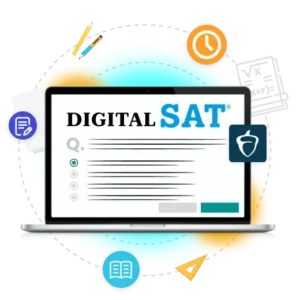Preparing for the new SAT (Scholastic Assessment Test) requires a strategic approach that combines understanding the format of the test, consistent practice, and improving your test-taking skills. The College Board, which administers the SAT, announced changes to the test format, aiming for a more digital, adaptive test that can be completed in a shorter time frame. Here are some strategies and steps you can take to prepare effectively for the new SAT:

1. Understand the New Test Format
- Familiarize yourself with the new format: Understand the structure of the test, including the types of questions in each section (Evidence-Based Reading and Writing, Math) and the scoring system.
- Digital and adaptive: The new SAT will be administered digitally and will be adaptive, meaning the difficulty of questions will adjust based on your performance.
- Start Early
- Begin your preparation at least 3-6 months before the test date. This gives you ample time to identify your weaknesses and improve them.
- Official Practice Resources
- Use official practice materials: The College Board offers official SAT practice tests and resources in partnership with Khan Academy. These materials are tailored to the new test format and provide personalized practice plans.
- Take practice tests: Regularly taking full-length practice tests helps you become familiar with the test’s timing and pressure. Since the new SAT is digital, ensure you take these practice tests on a computer.
- Seek out tutors if needed: For subjects you need assistance with, seek out a tutor to help you learn difficult subject matter.
- Use study groups: Study groups can be a powerful and effective way to master course material. Study groups can provide a learning dynamic that can help you learn subject matter from varying perspectives and through synergistic learning.

- Focus on Core Skills
- Reading and Writing: Improve your reading comprehension and grammar skills. Practice reading diverse passages and articles to enhance your ability to understand and analyze texts quickly.
- Math: Brush up on fundamental math skills covered in the test, focusing on algebra, problem-solving, data analysis, and some advanced math concepts. Practice without a calculator for sections where it’s not allowed.
- Adaptive Test Strategies
- Since the new SAT is adaptive, working accurately through the initial question is crucial because they set the level of difficulty you’ll face in subsequent questions. Ensure you understand each question fully before answering.

- Time Management
- Practice managing your time effectively during each section of the test. The digital format may change how you allocate time to questions, so find a strategy that works best for you.
- Stay Updated
- Keep an eye on updates: As the test format has undergone significant changes, it’s important to stay informed about any further modifications or tips from the College Board.
- Health and Wellness
- Don’t underestimate the importance of good sleep, nutrition, and exercise in the weeks leading up to the test. A healthy body contributes to a sharp mind.
- Test Day Preparation
- Familiarize yourself with the test day requirements, especially since the test is now digital. Ensure your device is ready and understand the test center’s rules if you’re taking it at a testing location.
Consider Test Prep Courses
- If you need additional help, consider enrolling in a test prep course. Many organizations offer courses specifically designed for the new SAT format, providing strategies and insights that can boost your score.
Remember, preparation for the SAT is not just about cramming; it’s about developing a deeper understanding of the material and test-taking strategies. Stay calm, stay focused and approach your study plan with a positive mindset.
To Your Success,
Drs. Jeff and Brian Haig

